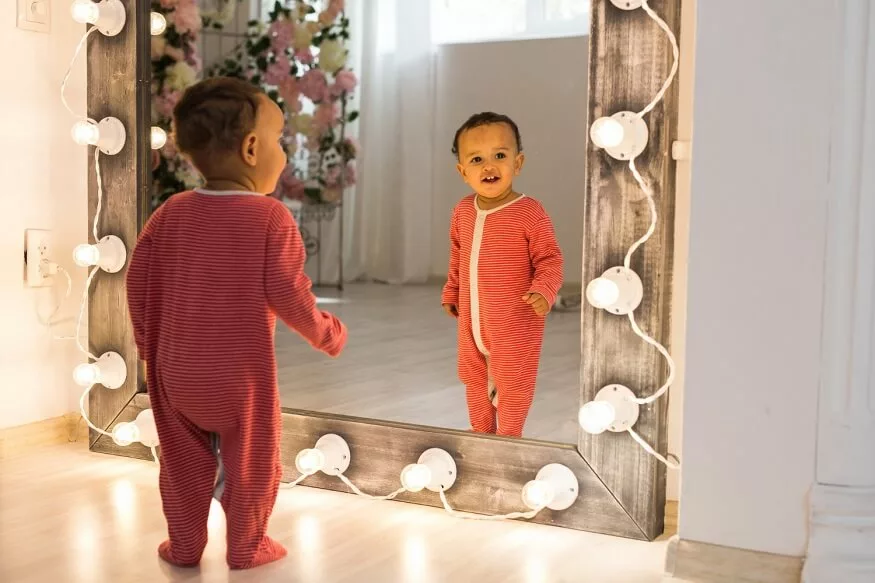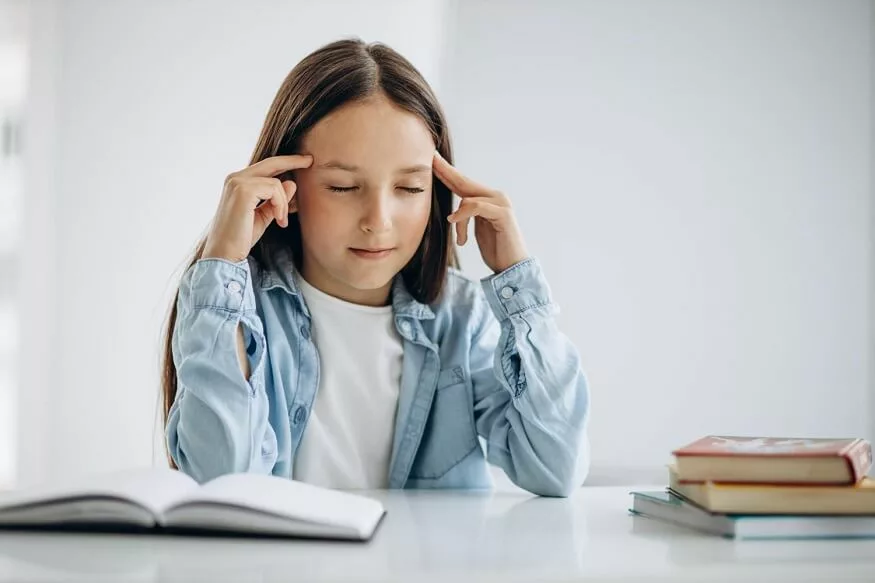Mirrors take on a magical quality for babies. In this article, we delve into the fascinating landscape of why mirrors are not just reflective surfaces but essential tools for the development and joy of our littlest humans.
Why Babies Love Mirror
Babies are naturally drawn to mirrors due to their developing self-awareness. The reflection captivates them, fostering curiosity and recognition of facial expressions. Mirrors provide sensory stimulation and support early social development as babies engage in “mirror play,” a joyful exploration of their own reflections, promoting cognitive and emotional growth.
Benefits of Mirrors For Babies
Here are some benefits of mirrors for babies
Mirror Play for Infants
- Visual Exploration: The earliest encounters with mirrors introduce babies to visual exploration. The reflective surface captivates their attention, becoming a canvas for the developing sense of sight.
- Recognition of Self: As early as a few months old, babies begin to recognise their own reflection. This awareness marks a crucial step in the journey of self-recognition and identity formation.
- Building a Sense of Self: Mirrors contribute to the development of a baby’s sense of self. The mirror becomes a friendly companion in their journey of self-discovery, fostering a positive relationship with their own image.
Cognitive Development
- Object Permanence: Mirrors play a role in the concept of object permanence—the understanding that objects continue to exist even when they are not in sight. Babies learn that the face they see in the mirror is their own, contributing to the early stages of cognitive development.
- Spatial Awareness: Interacting with mirrors helps babies develop spatial awareness. They learn to coordinate their movements by reaching towards their reflection, understanding the correlation between their actions and the visual feedback in the mirror.
- Visual Tracking: The movement of a baby’s eyes as they track their reflection enhances visual tracking skills. This, in turn, supports the development of hand-eye coordination.
Emotional and Social Development
- Social Interaction: Mirrors introduce an early form of social interaction. Babies often engage in “conversations” with their reflections, fostering a sense of companionship and providing a platform for social development.
- Expression Recognition: As babies observe their own expressions in the mirror, they begin to recognise and understand a range of emotions. This early exposure to emotional cues contributes to the development of empathy and emotional intelligence.
- Building Confidence: Positive experiences with mirrors, such as smiling at one’s own reflection, contribute to building a baby’s confidence. The mirror becomes a space for self-affirmation and joy.
Mirror Activities for Infants
- Tummy Time with Mirrors: Placing a baby on their tummy in front of a mirror during supervised tummy time encourages neck strength and visual tracking. The mirror provides a stimulating focal point for the baby to engage with during this crucial developmental exercise.
- Mirror Mobiles and Toys: Introducing mirror mobiles or toys in the crib or play area provides an interactive element for the baby. The play of light and reflection captivates their attention, creating a visually stimulating environment.
- Interactive Mirrors: Some mirrors are designed with interactive elements such as attached toys or textured surfaces. These mirrors encourage tactile exploration and add a multisensory dimension to mirror play.
- Mirror-Supported Sitting: Placing a baby in front of a mirror during supported sitting practice helps them develop core strength and balance. The visual feedback from the mirror serves as motivation for the baby to maintain an upright position.
Safety Considerations
- Safe Mirror Placement: When introducing mirrors to infants, ensure that they are safely secured to prevent accidental falls. Mirrors designed for nursery use often come with features that prioritise infant safety.
- Avoid Glass Mirrors in Cribs: Avoid placing glass mirrors inside the crib due to safety concerns. Instead, opt for baby-safe mirrors designed specifically for nursery use.
- Supervision during Mirror Play: Always supervise infants during mirror play, especially when they are in motion. This ensures a positive and safe exploration experience.
Also Read: How To Choose A Right Baby Stroller That Fits Your Needs
Choosing Baby-Safe Mirrors
Here are some tips to choose baby safe mirrors:
- Non-Breakable Materials: Choose mirrors made from non-breakable materials, especially if they will be placed in the nursery or play area where the baby has direct access.
- Soft Edges and Corners: Opt for mirrors with soft edges and corners to minimise the risk of injury during play. Many mirrors designed for infant use incorporate features that prioritise safety.
- Secure Mounting: If you are installing a mirror in the nursery, ensure it has a secure mounting mechanism to prevent accidental falls.
- Consider Size and Weight: Choose a mirror that is appropriately sized and weighted for the intended use. Lightweight mirrors are suitable for play, while securely mounted larger mirrors can be introduced as a part of nursery decor.
Also Read: Best Ways to Sleep Train Your Baby – Methods, Tips and When to Try It
The Evolving Role of Mirrors in Early Childhood
The relationship between infants and mirrors evolves as they progress through different stages of childhood:
- Toddlerhood and Self-Expression: Toddlers delight in self-expression through mirrors. They may experiment with facial expressions, dance, or engage in imaginative play using mirrors as magical portals.
- Preschool Exploration: In preschool years, mirrors continue to be valuable tools for self-awareness and grooming. Children learn about personal hygiene, dressing themselves, and expressing their individuality.
- Educational Integration: Mirrors are often integrated into early childhood educational environments. They become components of activity stations, supporting learning across various domains, including language, mathematics, and creativity.
Also Read: Exploring The Comfort and Joy of Baby Bouncers and Swings
Mirrors emerge not merely as reflective surfaces but as timeless companions in the journey of growth. From the first flicker of self-recognition to the exuberant play of preschool years, mirrors contribute to the multifaceted development of infants and young children.
As parents and caregivers, the introduction of mirrors to the baby’s world is an invitation to witness the unfolding of self-awareness and the joy of discovery. Through mirror play, infants embark on a voyage of visual exploration, cognitive development, and emotional connection—a journey marked by the gentle reflection of their own evolving selves.
So, let mirrors adorn the nursery walls, play areas, and educational spaces, becoming not just objects in the periphery but cherished companions reflecting the boundless potential of each precious moment in the extraordinary voyage of early childhood. For more such blogs on babies, infant, and child development, read EuroSchool blogs.










